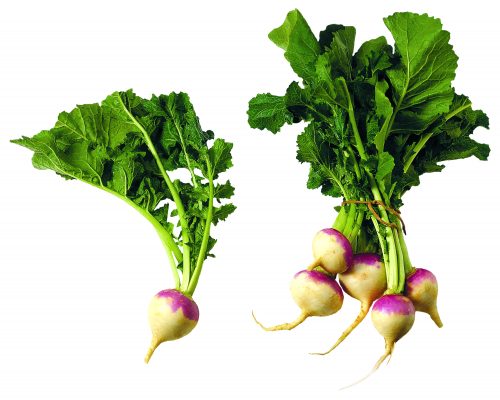
Compared to the larger, yellow or orange-fleshed swede, the turnip is usually smaller with white flesh.
While the turnip is usually called a root vegetable, it is in fact a brassica — the bulbous vegetable we eat is the swollen stem and top portion of the taproot. Turnip leafy greens are also edible.
Buying
In general, the smaller the turnip, the sweeter the taste. Select small to medium-sized blemish-free turnips that carry some weight.
Storing
Keep unwashed turnips in a cool, dark dry place — storing turnips in a bag, in the crisper in the fridge will see them last for about a fortnight. Clean and store turnip greens separately for up to a week in the fridge. (Cook turnip greens like other leafy greens.)
Nutrition
Like their cousins broccoli, turnips contain the antioxidant glucosinolates, although in smaller amounts.
Using
Like the swede, turnips can be eaten raw. Young (sweet) turnips don’t need to be peeled but older, later-in-season turnips with stringy skins are best with skins off. Turnip greens can be prepared like spinach — for example steamed, added to soups and stews.
More health, less cost: Use turnips as a spiced side one night; another night, slice turnip thinly and add to a stir-fry (cook until still slightly crisp); and yet another night, use small turnips cut in wedges as part of a crudité platter.
www.healthyfood.com










